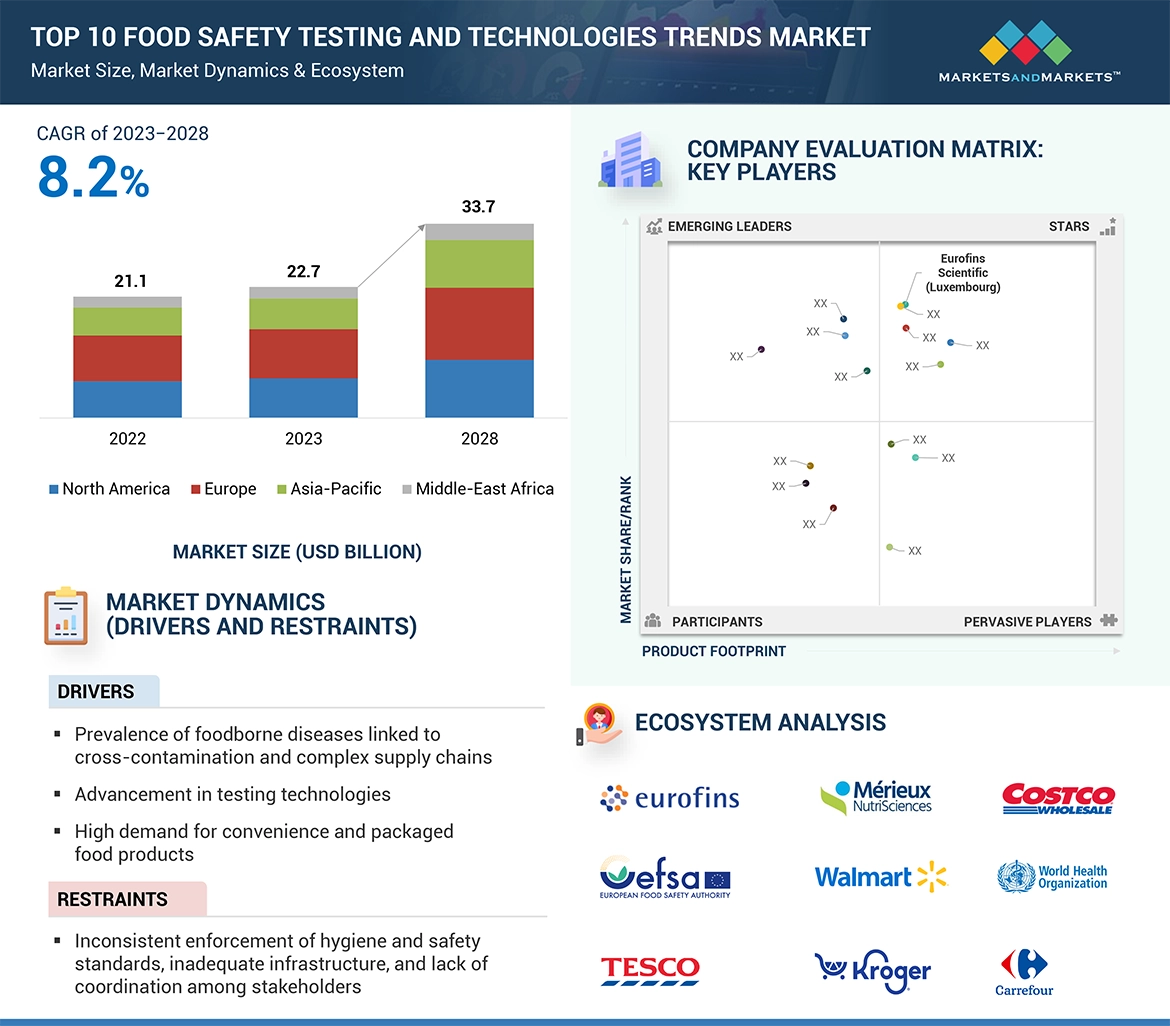The global food safety testing and technologies trends market is projected to grow from USD 22.7 billion in 2023 to USD 33.7 billion by 2028, registering a CAGR of 8.2% during the forecast period. One of the major driving forces behind this growth is the globalization of the food supply chain, which has significantly changed how food is produced, processed, and distributed across borders. As the supply chain becomes increasingly interconnected, the demand for standardized and reliable pathogen testing has grown to ensure food safety at every stage.
To enhance their market presence, key industry players are actively engaging in strategic initiatives such as product launches, expansions, and partnerships.

Download PDF Brochure: https://www.marketsandmarkets.com/pdfdownloadNew.asp?id=19285603
Dominance of PCR-Based Testing in GMO Food Safety
The PCR (polymerase chain reaction)-based testing segment is expected to lead the GMO food safety testing market throughout the forecast period. Known for its high accuracy, sensitivity, and specificity, PCR technology is highly effective in detecting genetically modified organisms (GMOs) by identifying precise DNA sequences. Its ability to deliver rapid and reliable results makes it the preferred method for large-scale screening and regulatory compliance, especially as consumer demand for transparent labeling and non-GMO assurances continues to grow.
Fruits and Vegetables Lead in Pesticide Residue Testing
The fruits and vegetables segment is anticipated to be the fastest-growing area within the pesticide residue testing market. Increasing consumer awareness around the health risks of pesticide exposure has driven demand for safer, residue-free produce. As a result, regulatory bodies have imposed stricter standards, prompting producers and retailers to intensify testing efforts. The surge in organic food consumption has further amplified the need for thorough residue verification, reinforcing the segment’s dominant position in the market.
Asia Pacific Emerging as a Market Leader
The Asia Pacific region currently holds the largest share of the top 10 food safety testing and technology trends market and is set to experience the highest growth during the forecast period. Key factors contributing to this rapid expansion include accelerating urbanization, rising disposable incomes, and growing consumer demand for food safety and quality. Furthermore, government initiatives, technological advancements, and increasing investments—both local and international—are strengthening the region’s role as a major hub for food safety innovation and development.
Request Sample Pages: https://www.marketsandmarkets.com/requestsampleNew.asp?id=19285603
Key Market Players:
This report includes a study of the marketing and development strategies, along with the product portfolio, of leading companies. These companies include SGS Société Générale De Surveillance SA (Switzerland), Bureau Veritas (France), Intertek Group PLC (UK), Eurofins Scientific (Luxembourg), ALS (Australia), TUV Nord Group (Germany), AsureQuality (New Zealand), Mérieux NutriSciences Corporation (US), Microbac Laboratories, Inc. (Pennsylvania), IFP Institute for Product Quality GmbH (Germany), EMSL Analytical, Inc. (US), Symbio Laboratories (Australia), Hill Laboratories (New Zealand), Thermo Fisher Scientific Inc. (US), Bio-Rad Laboratories, Inc. (US), and Romer Labs (Austria) among others.
Key Questions Addressed by the Report:
Who are some of the key players operating in the food safety testing market, and how intense is the competition?
What kind of stakeholders would be interested in this market? What will be their go-to-market strategy, and which emerging market will be of significant interest?
What are the potential challenges to the food safety testing market?
What are the key market trends in the food safety testing market?
What is the total CAGR expected to be recorded for the top 10 food safety testing and technology trends in the market during 2023-2028?
